Close
GC Broth 500 grams/bottle
SKU
CDL/2075
Brand
CONDALAB
Pre-order (Deliver in 8 to 12 weeks)
GC Broth is used to prepare the GC Agar Base with the adequate addition of agar. It is used with various additives for the isolation and cultivation of pathogenic microorganisms such us Neisseria gonorrhoeae, Haemophilus influenzae and N. meningitidis.
Peptone mixture provides nitrogen, vitamins, minerals and amino acids essential for growth. Corn starch absorbs any toxic metabolites produced. Dipotassium and monopotassium phosphates act as buffer systems. Sodium chloride supplies essential electrolytes for transport and osmotic balance.
GC Agar Base is employed with the addition of hemoglobin and supplements for the preparation of Chocolate Agar and Thayer-Martin Medium. Chocolate Agar is prepared with the addition of 2% hemoglobin. The addition of hemoglobin provides hemin (X factor), required by Haemophilus species and promotes the growth of Neisseria species.
A chemical enrichment composed of cofactors, vitamins and nicotinamide adenine dinucleotide (NAD) is also required for the growth of Haemophilus and Neisseria spp. If required, antimicrobial supplements are added as inhibitors for an improved selectivity of the medium.
Thayer-Martin Medium is recommended for the primary isolation of N. gonorrhoeae and N. meningitidis from specimens with mixed flora taken from throat, vagina, rectum and urethra samples. It is designed to reduce the overgrowth of gonococci and meningococci by contaminants, to suppress saprophytic Neisseria species growth and to encourage pathogenic Neisseria growth. The typical colonies of N. gonorrhoeae on Thayer-Martin Medium are white-gray, opaque, sometimes shiny, finely granular in appearance, variable in size (1-2 mm), round with entire or lobate edges and mucoid after 48 hours of incubation.
The specimen should be placed on the surface of the plate making sure that a heavy inoculum is contained in a relatively small area. Streaking out from this area will produce well-isolated colonies. Incubate in a humid atmosphere of 5-10% CO2 and at 35 �C for 40-48 hours. For suspect isolated colonies, perform a Gram stain and oxidase test.
In carbohydrate studies using the CTA Medium (Cat. 1502) with selected 1% sugars, N. gonorrhoeae ferments only glucose with acid production but no gas production. N. meningitidis ferments both glucose and maltose with acid but no gas production. The carbohydrate tests are carried out incubating the medium for 1-4 days at 35 �C, aerobically and without CO2.
The antimicrobial agents in selective formulas such as Thayer-Martin Medium inhibit some strains of N. gonorrhoeae, therefore it is wise to streak non-selective Chocolate Agar plates to culture these organisms.
GC Broth is used to prepare the GC Agar Base with the adequate addition of agar. It is used with various additives for the isolation and cultivation of pathogenic microorganisms such us Neisseria gonorrhoeae, Haemophilus influenzae and N. meningitidis.
Peptone mixture provides nitrogen, vitamins, minerals and amino acids essential for growth. Corn starch absorbs any toxic metabolites produced. Dipotassium and monopotassium phosphates act as buffer systems. Sodium chloride supplies essential electrolytes for transport and osmotic balance.
GC Agar Base is employed with the addition of hemoglobin and supplements for the preparation of Chocolate Agar and Thayer-Martin Medium. Chocolate Agar is prepared with the addition of 2% hemoglobin. The addition of hemoglobin provides hemin (X factor), required by Haemophilus species and promotes the growth of Neisseria species.
A chemical enrichment composed of cofactors, vitamins and nicotinamide adenine dinucleotide (NAD) is also required for the growth of Haemophilus and Neisseria spp. If required, antimicrobial supplements are added as inhibitors for an improved selectivity of the medium.
Thayer-Martin Medium is recommended for the primary isolation of N. gonorrhoeae and N. meningitidis from specimens with mixed flora taken from throat, vagina, rectum and urethra samples. It is designed to reduce the overgrowth of gonococci and meningococci by contaminants, to suppress saprophytic Neisseria species growth and to encourage pathogenic Neisseria growth. The typical colonies of N. gonorrhoeae on Thayer-Martin Medium are white-gray, opaque, sometimes shiny, finely granular in appearance, variable in size (1-2 mm), round with entire or lobate edges and mucoid after 48 hours of incubation.
The specimen should be placed on the surface of the plate making sure that a heavy inoculum is contained in a relatively small area. Streaking out from this area will produce well-isolated colonies. Incubate in a humid atmosphere of 5-10% CO2 and at 35 ºC for 40-48 hours. For suspect isolated colonies, perform a Gram stain and oxidase test.
In carbohydrate studies using the CTA Medium (Cat. 1502) with selected 1% sugars, N. gonorrhoeae ferments only glucose with acid production but no gas production. N. meningitidis ferments both glucose and maltose with acid but no gas production. The carbohydrate tests are carried out incubating the medium for 1-4 days at 35 ºC, aerobically and without CO2.
The antimicrobial agents in selective formulas such as Thayer-Martin Medium inhibit some strains of N. gonorrhoeae, therefore it is wise to streak non-selective Chocolate Agar plates to culture these organisms.
| Brand | CONDALAB |
|---|
Write Your Own Review



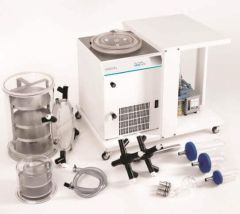
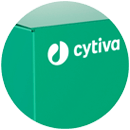
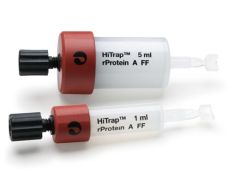
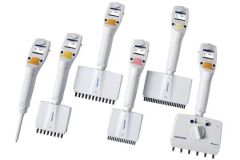
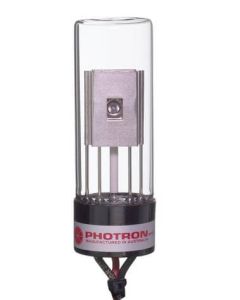

Validate your login